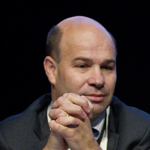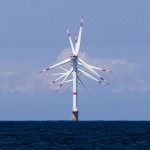 Every day newspapers are full of the latest Eurozone crisis. In 2010, Tom Murley from private equity firm HgCapital described the economy to Wind Directions as having had the equivalent of “open-heart surgery”. Today, he says: “Depending on what happens with the Eurozone we may be wheeling the economy back into surgery again.”
Every day newspapers are full of the latest Eurozone crisis. In 2010, Tom Murley from private equity firm HgCapital described the economy to Wind Directions as having had the equivalent of “open-heart surgery”. Today, he says: “Depending on what happens with the Eurozone we may be wheeling the economy back into surgery again.”
The offshore wind energy industry is particularly vulnerable to the current squeeze. Banks are now having to pay more for the long-term loans the sector requires, so they are becoming more reluctant to offer them.
continue reading »
 By EWEA Communication Director Julian Scola
By EWEA Communication Director Julian Scola
In recent months there have been many media articles claiming that wind energy is more expensive and less reliable than other power sources, and that it receives heavy government subsidies. Such claims damage the perception of this cheap and clean form of energy.
The reality is that wind energy, and renewables in general, are successful because investors see that onshore wind is increasingly competitive with new gas and coal and is cheaper than nuclear, in an environment in which governments have made commitments to reducing carbon emissions, and where the public wants a safer, cleaner world without constant fluctuations in energy prices. Current data from Bloomberg New Energy Finance says that “funding of green energy projects rose by 5% last year” to $260bn worldwide. Another Bloomberg quote says “the best wind farms in the world already produce power as economically as coal, gas and nuclear generators; the average wind farm will be fully competitive by 2016”.
continue reading »
 By Tuuliki Kasonen, General Manager, Estonian Wind Power Association
By Tuuliki Kasonen, General Manager, Estonian Wind Power Association
Offshore wind energy is an innovative new industry, which by creating thousands of jobs and intensive investments gives Europe a necessary impulse for economic growth. It can also provide the missing pieces in the energy and climate puzzle that Europe needs to solve urgently. What I brought home from EWEA OFFSHORE 2011 – the world’s largest offshore wind energy event – was the feeling that the next decade will be crucial for bringing down the costs and filling some gaps to make this type of energy production a really competitive one.
continue reading »
 By Julian Scola, EWEA Communication Director
By Julian Scola, EWEA Communication Director
A report published in Britain has claimed that ‘wind power is expensive and yet is not effective in cutting CO2 emissions’ and that ‘there is no economic case for wind-power’. The report has been the jumping-off point for sensationalist articles in UK media claiming that wind power is ‘unreliable and requires conventional back-up capacity’ by conventional gas-fired generation, which can emit more CO2 than the most effective gas turbines running alone, and even headlines like “Wind farms cause greater pollution”.
The report, entitled ‘Electricity costs: the folly of wind power’, produced by Civitas, has been roundly criticised for inaccuracy, non-peer-reviewed and biased research, and failing to understand how a modern electricity grid works. The report is based on research by Colin Gibson. According to RenewableUK, he makes assumptions that “significantly inflate the cost of energy from wind”. Also cited is Dutch physicist Dr. Kees le Pair, a long-time critic of the wind industry and author whose work is not peer-reviewed. The report is written by Ruth Lea, a “prominent critic of climate policies (particularly the promotion of renewables)”, according to the Guardian.
continue reading »
 It was a tough year. The financial and debt crisis lurked in Europe and the US throughout 2011 and even fast-growing economies in Asia began to stutter. The international community still did not come up with a legally-binding agreement on limiting and then rapidly reducing toxic greenhouse gas emissions. Unemployment was high, social unrest leapt from country to country. And yet, despite all that despair and uncertainty, wind power remained a beacon of good, proving to weary politicians that the emissions-free technology can deliver on jobs, electricity supply, and the environment. The EWEA Blog covered developments;
It was a tough year. The financial and debt crisis lurked in Europe and the US throughout 2011 and even fast-growing economies in Asia began to stutter. The international community still did not come up with a legally-binding agreement on limiting and then rapidly reducing toxic greenhouse gas emissions. Unemployment was high, social unrest leapt from country to country. And yet, despite all that despair and uncertainty, wind power remained a beacon of good, proving to weary politicians that the emissions-free technology can deliver on jobs, electricity supply, and the environment. The EWEA Blog covered developments;
continue reading »
 Every day newspapers are full of the latest Eurozone crisis. In 2010, Tom Murley from private equity firm HgCapital described the economy to Wind Directions as having had the equivalent of “open-heart surgery”. Today, he says: “Depending on what happens with the Eurozone we may be wheeling the economy back into surgery again.”
Every day newspapers are full of the latest Eurozone crisis. In 2010, Tom Murley from private equity firm HgCapital described the economy to Wind Directions as having had the equivalent of “open-heart surgery”. Today, he says: “Depending on what happens with the Eurozone we may be wheeling the economy back into surgery again.”









